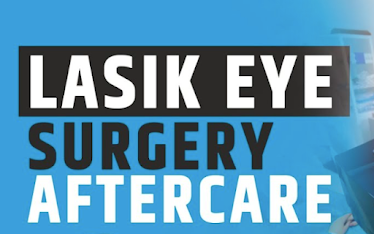What if you Sneeze during Lasik?
LASIK surgery is a well-liked refractive therapy that treats visual issues like nearsightedness, farsightedness, and unanticipated complications like sneezing. In this article, astigmatism is discussed. Although LASIK is a safe and successful procedure, patients frequently express worries about the possible effects of sneezing during the procedure and inquire about the steps taken by the doctors to guarantee patient safety and the procedure's effectiveness. It is one of the most popular elective operations performed worldwide and has given millions of individuals better eyesight and a decreased need for corrective glasses.
Understanding LASIK Surgery
To correct refractive defects, LASIK, or Laser-Assisted In Situ Keratomileusis, involves reshaping the cornea with a laser. During the procedure, a tiny corneal flap is made, and the corneal tissue behind it is altered to enhance vision. After that, the flap is adjusted, enabling a speedy recovery with little discomfort.
The Importance of a Controlled Environment
Surgeons carry out LASIK in a well-regulated setting to guarantee its precision and safety. To reduce the possibility of problems, the surgery suite is outfitted with cutting-edge equipment and sterile conditions. Sneezing is one unexpected effect that both patients and surgeons may find concerning.
Maintaining a controlled environment helps in several ways:
Sterility: LASIK is a sensitive surgical process that reshapes the cornea by making small, exact incisions. Infection and other problems are less likely in a sterile setting.
Stability: For LASIK to be successful, the patient's eye must be fixed and steady during the procedure. Any abrupt changes or motions might compromise the procedure's accuracy. The controlled setting reduces outside influences that can result in unintentional eye movement.
Hygiene: The operating room is meticulously cleaned and maintained to eliminate impurities that can endanger the surgical site. This lowers the chance of infection following surgery and encourages faster recovery.
Equipment Calibration: To give precise laser treatments, the sophisticated equipment utilized for LASIK surgery has to be precisely calibrated. The equipment operates at peak efficiency and produces reliable results thanks to the regulated atmosphere.
Temperature and Humidity Control: Controlling temperature and humidity is important because changes in either of these factors can affect the cornea and the tools used during surgery. A regulated environment must maintain ideal temperature and humidity levels to ensure the cornea remains stable and that the equipment operates correctly.
Precautions Taken During LASIK
Patients get a comprehensive assessment before LASIK surgery to ascertain their candidature and any possible hazards. Patients are informed about the operation, its advantages, and the infrequent but possible side effects. Precautions are made throughout the procedure to lessen the effect of any unexpected movements, such as sneezing.
Eye Tracking Technology
Most modern LASIK systems use eye-tracking technology, which enables the laser to trace the motions of the eye during the treatment. These cutting-edge devices contain a tracking mechanism to identify and correct minute motions, guaranteeing precise care. The eye-tracking system would halt the laser if a patient sneezed until the eye stabilized, avoiding accidental cornea reshaping.
Blinking Reflex and Surgical Technique
The blinking reflex might present some difficulties while doing LASIK (Laser-Assisted in Situ Keratomileusis), a common operation for treating refractive defects such as nearsightedness, farsightedness, and astigmatism. Surgical procedures and safety measures are used to regulate the blinking reflex and achieve a satisfactory outcome successfully.
First, local anesthesia is used to numb the patient's eyes before the LASIK surgery. This lessens sensation and the impulse to blink while having surgery. Eye drops can also be used to numb the eye further and lessen pain.
A speculum placed over the eyelids maintains them open and stops reflexive blinking when the eye has been sufficiently numbed. The surgeon can see the cornea clearly and steadily because of the instrument's gentle holding of the eyelids apart.
LASIK surgery is typically performed with great precision and speed to minimize the impact of the blinking reflex. Corneal flap creation and laser ablation are executed swiftly, reducing the time frame for blinking.
Additionally, the surgeon and the surgical team coordinate their actions to ensure optimal timing and synchronization with the patient's blinking pattern. Communication between the surgeon and the patient is crucial to anticipate and manage any potential interference from the blinking reflex.
Communication with the Surgeon
Patients are urged to be candid with their surgeon during the LASIK treatment. Patients should notify the surgical team immediately if they need to sneeze. The doctor might take a break from the treatment so the patient can sneeze safely and openly. The surgeon will carefully restart the surgery when the sneeze has stopped.
Post-Procedure Evaluation and Follow-up
Patients with LASIK surgery undergo a thorough review to ensure the treatment is successful and spot any potential issues. This examination includes determining the integrity of the corneal flap, testing visual acuity, and keeping track of the healing process. To preserve the best aesthetic results, the surgeon will address any problems right away, such as flap displacement brought on by sneezing.
Conclusion
Sneezing during LASIK surgery may worry patients, but it's crucial to remember that safety measures are in place to guarantee the procedure's success. Sneezing is considered using eye-tracking equipment and surgical methods that allow for anticipated motions and pauses. Patients who communicate openly with the surgical team can immediately address discomfort or instinctive desires. Comprehensive assessments and the right postoperative treatment will further reduce any potential issues. LASIK is still a safe and successful operation that gives people better eyesight and a higher quality of life.




Comments
Post a Comment